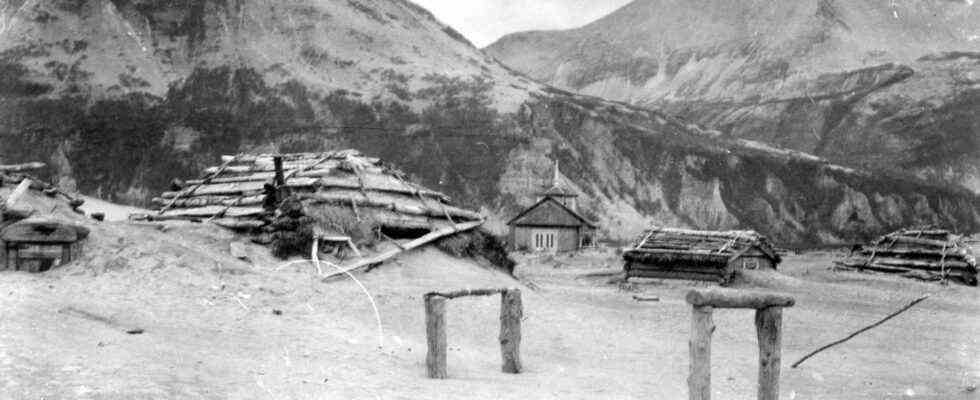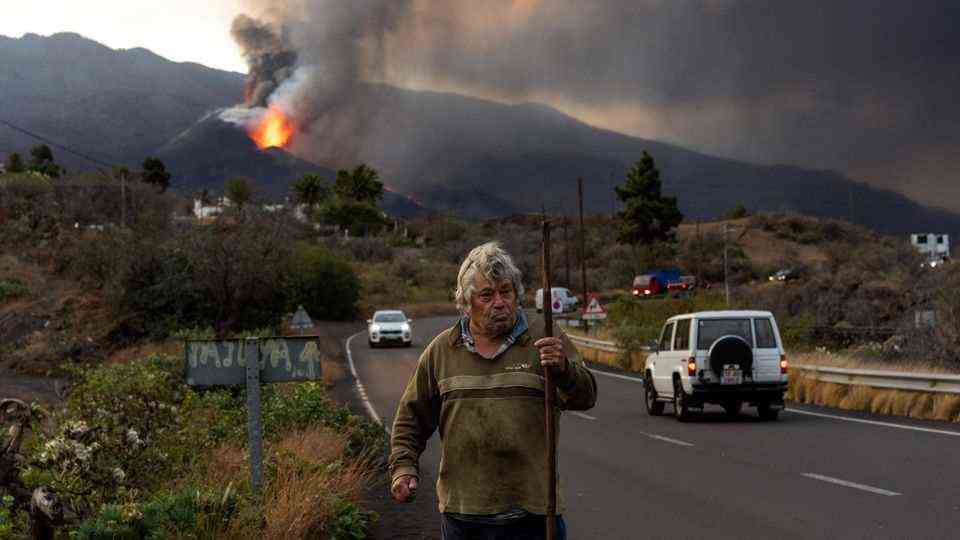US state of Alaska
Volcanic ash is on its way to Kodiak Island – from an eruption 109 years ago
The long-abandoned Katmai Village in June 1912 after the eruption of the Novarupta volcano: ash drifts have half filled the huts.
© GC Martin / Picture Alliance
In June 1912, the Novarupta volcano erupted on Alaska. It was one of the biggest eruptions of all time – the consequences of which the residents of the US state can still feel today.
Volcanologists are warning of an ash plume from an eruption more than a century ago that is currently headed for Kodiak Island in Alaska. “Strong northwest winds near Katmai and the Valley of Ten Thousand Smokes are taking up loose volcanic ash formed during the Novarupta-Katmai eruption of 1912 and will carry it southeast until Thursday morning,” said the US state’s Department of the Environment on Wednesday.
Unnecessary ash contact should be avoided
Should enough ash fall to cover the ground, there is a potential for health risks if winds or human activity causes the ash to be raised again, the agency said. People exposed to the volcanic ash could experience irritation to the eyes, nose and throat. In small children, the elderly and those with respiratory diseases, the ashes can cause breathing difficulties. They should therefore pay attention to possible ash fall in their area and exercise caution if necessary.
The environmental agency advises that unnecessary contact with the ash should be avoided. “Wear a disposable face mask outdoors to avoid inhaling ash particles. Wearing safety glasses can help protect your eyes, and wearing long-sleeved shirts and gloves can also help.” And pets should also be considered. These are prone to the same symptoms and should therefore be kept indoors or protected from ash fall.
The ash cloud was not the result of recent volcanic activity, the volcanologists reassured. “There is no eruption in progress.” The phenomenon occurs in times of strong winds and dry, snow-free conditions in the Katmai region about 400 kilometers southwest of Anchorage and other young volcanic regions of Alaska.
“Usually at this time of year the northwest winds come down from the Katmai region, driving up the ash that has been deposited since the 1912 eruption,” said geophysicist Hans Schwaiger of the Alaska Volcano Observatory the Associated Press (AP) news agency. “This outbreak does not appear to be as ash rich as others, so the ash fall will likely be negligible.”
Novarupta eruption is one of the largest of all time
The eruption of Novarupta on June 6, 1912 was the strongest of the 20th century and is one of the largest eruptions of all time. The US geology department estimates that 15 cubic kilometers of magma leaked, about 30 times as much as when Mount St. Helens erupted in Washington state 40 years ago. For three days, the Novarupta hurled ashes up to a height of 30,000 meters. The ash settled in what is now known as the Valley of Ten Thousand Smokes, reaching a height of 180 meters in places.
Kodiak Island has about 13,000 residents, according to AP, and is home to a large US Coast Guard base. The island can only be reached by plane or ship. The fishing industry is the most important industry on the mountainous island.
Sources: Alaska Department of Environmental Conservation, Associated Press


